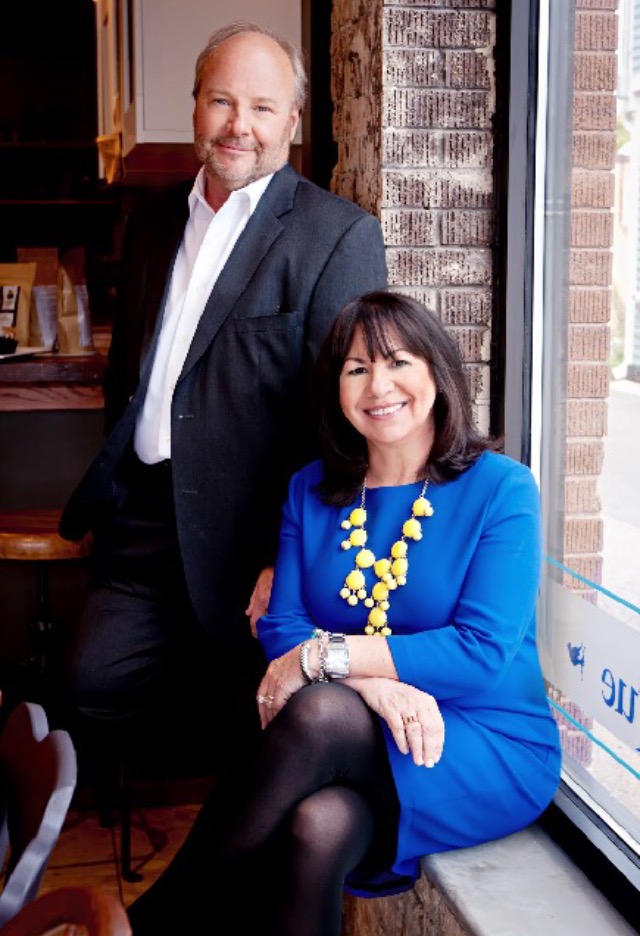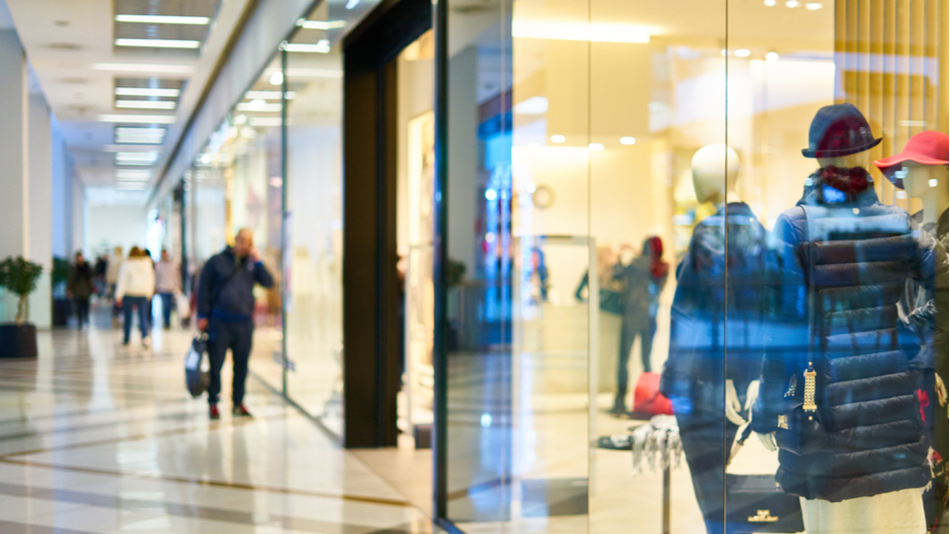Georganne Bender and Rich Kizer comprise the dynamic duo that is KIZER & BENDER. As “consumer anthropologists,” KIZER & BENDER’s client list reads like a “who’s who” in retail. Internationally lauded for their no-holds barred approach, their clients rely on them for timely advice on how to wow shoppers rise to the demands of our ever-evolving retail marketplace.

I sat down with these retail veterans to learn more about their experience working in retail and with retailers, their views on the current state of the industry, and the role they envision technology playing. Here are some big takeaways from our conversation.
They moved through retail’s ranks the old-fashioned way, and their charisma earned them an audience.
HEIDI SAX: To start, I’d love to hear how you became authorities on retail.
GEORGANNE BENDER: Rich ran regional department stores. He was well known in the industry for hosting fabulous in-store events and promotions that drew crowds. At one point he put the big department store across the street out of business and moved his store into that building.
When I graduated from high school, my mother said to me: “Get out of the house and go get a job. And don’t come back until you have one.” I went to the mall and got a job at an independently owned department store. I worked there through college, eventually becoming department head and a buyer. After spending time at The Gap and Hit or Miss, I landed at a company called Household Merchandising, which later became FOX Retail Group.
That’s where I met Rich, and that’s where I became a Store Planner. We both worked for the Ben Franklin Division. I was in store planning and design, and he was in real estate first and then marketing, right?
RICH KIZER: Right.
GB: Our company held trade shows twice a year. And they were big, because back then we had about 3,000 franchisees that would come. So, Rich was doing a presentation on marketing and I was doing one on visual merchandising. There was a panel discussion and a couple of people backed out of it. They asked Rich and I if we would sit on it. And we said: “Okay!”
We knew each other, but we didn’t know each other really well. And as you get to know us, you’ll know that sometimes we have a he said/she said version of things. We were in our 30’s then. Rich said something that I considered to be stupid and I made a comment. And then he made one back at me, and we kind of went from there. Afterwards, the meeting planner said: “That was really good. Will you do a presentation together at the next show?” And that’s where we started. We put together a presentation. That was a hit. Then we did another one, and then we decided: “This is really fun, let’s start a company.”
RK: And actually, other retailers like Ace Hardware came after us in a big way, and said: You’ve got to come to our shows.” And that pretty much launched it. That’s the way it started. How many years ago?
GB: Twenty-nine.
RK: Twenty-nine years ago.
They love a great big box retailer, even though they work with independent ones.
HS: You’ve worked with so many retailers. Which are really getting it right today?
GB: Target. They come in number one for me because they just never stop. I’d love to be in the meetings in their headquarters when they’re throwing around ideas, because every other month it’s something that another retailer isn’t doing, or they’re doing it better. They do the designer popup departments, and everything sells out in 10 minutes. The jacket you wanted to buy that was $70 is now $2,000 on eBay. Well, they’re doing one coming up that brings together the designers that were successful. They just tap into what’s going on in the world and what customers want. So, they’d be mine.
RK: There are stores that are creating foundational truths and ladders that everybody else is following. And they’re one of them. And Walmart is a store that does incredible things that impact not only their customers and their sales, but retailers across the board.
GB: It’s kind of funny to hear us say Walmart’s doing these great things, because we work a lot with independent retailers. We actually worked for the company — Sam Walton had stores. He started out of Ben Franklin’s stores. And I went to work there, not too long after the powers that be at that company had told him that Walmart was a stupid idea. They did!
RK: I want to mention Kohl’s, too. When you think of chains that are inventing or creating a retail marketplace and “How To’s,” you can’t take your eyes off Kohl’s.
Retailers need to constantly reinvent themselves.
HS: So, between Target, Walmart, and Kohl’s, what do you think that it takes to be successful in retail today?
GB: I think the retailers that really do well are the ones that are going to try it their way because they have a vision of it in their heads and in their heart, and it’s going to work. And people are telling them: “You can’t do that,” “Nobody’s going to come there,” or “It’s not going to happen” and they do it anyway. I think the people that throw caution to the wind, but have a good plan, and just say, “I can make this happen” are the ones that have exciting stores.
RK: And you know what? The scary thing about our retail world today is how fast it’s really changing. Georganne and I always talk about 10 percent of your business changes every year whether you like it or not. Most retailers don’t reinvent themselves frequently. So, if you go two or three years without reinventing your position in the market, you’re 30 percent further behind those other companies that are on the beat and trying to make it work all the time. And therein lies the real catchup game. That is a very dangerous game if you’re on the bottom of that pile.
Retailers shouldn’t focus on other initiatives at the expense of their selling floors and their store teams.
HS: What do you think are the most urgent areas for improvement for retailers?
GB: What happens on the sales floor. You can have a gorgeous website and great Instagram presence, but I don’t get great service in your store or it doesn’t look good, that’s a problem. I was in a big, wonderful department store that everyone says has the best service in the history of man two days ago. There were clusters of salespeople talking to each other — I walked within three feet of several of them and they didn’t acknowledge me.
RK: We always talk about 7-Tile Rule, where every single time any associate comes within seven floor tiles — that’s seven feet — of a customer they must acknowledge them.
GB: Consumers expect better service at better stores. We don’t expect people to wait on us at Walmart because we know that’s a self-service environment. There are people that help us there if we need it, but it’s going to be a different kind of service expectation than when I go into a department store.
HS: What do you think that those retailers are getting wrong when it comes to training their customer workforce?
GB: Well, if they’re training, and I doubt they are, if they’re training —
RK: It’s just an orientation.
GB: — they are not impressing on their people how important the customer is.
RK: And how did they do that? They need to get on the floor and you work with their people.
GB: You know who did that? The Container Store. The CEO always went out during fourth quarter, and worked in a store so he can see exactly what people are looking for and what it’s like to be there.
RK: The second thing is, a lot of people that work in the retail environment don’t feel any personal responsibility because they’ve never been given goals to take care of something. Start giving them jobs or assignments — specific areas of the store — and then when they do it, you come down and say: “Oh my gosh, it looks wonderful.” All of a sudden they start taking ownership. It’s about them really feeling good.
GB: I think it’s really hard to work in a store. I think it’s really hard to work with the public, especially today, with all of the choices that they’re exposed to. I don’t think it’s fair to people who work on the floor to be thrown out there and not told what is expected of them and cannot be audited to make sure that they’re doing those things. And retailers again: “We’re so busy. I have so many things that I have to do today. I’m just going to throw the people out on the floor and let them go work.” It’s really hard to do for the person working the front line.
RK: And they’ve got to feel valuable. I think with technology today, it’s going to shrink the amount of inventory that you’d have to carry. You’re not bundling a warehouse and bringing it to the floor. That being the case, you need good people to tell you what’s happening.
Their observations on retail tech? A lot of it is half-baked.
HS: Are there technologies in the brick and mortar space that you think are the most promising, or that have real transformative effects?
GB: Certainly AI, if I’m watching something and I can interact and ask it simple questions, and it’s programmed to be able to follow a train of thought, that’s absolutely helpful. There are also things, though, that could work, but don’t. Macy’s, for example, offers a self-checkout app. You download their app, put in your credit card information, and scan the items, and pay for it in the app. That sounds really easy, right? Except, then you have to go stand in line anyway and wait for the salesperson to check that you actually did buy it, then checks it off and put it in a bag. I said to the sales lady, “What if you’re really busy and there’s 10 people in line?” “Well, people that use the app come to the front of the line.” “Great. Well, there’s 21 of them standing behind me who hate my guts now because I’ve jumped the line.” These are technologies that have potential, but aren’t quite there yet.
RK: There’s a real place for all this technology. But I don’t know if it’s the saving grace that everyone thinks it might be. What is the contribution? Tell me.
Chockful of fresh content and recognized by PR Newswire as a top retail blog, KIZER & BENDER’s “Retail Adventures” is a must-read. Head there to continue the conversation.
CB4 isn’t one of those flashy, half-baked technologies mentioned above. In fact, shoppers remain blissfully unaware that store managers are using CB4 to create exceptional experiences. Some of retail’s top performers (like Levi’s) use CB4 to inspire store managers with simple, actionable, AI-powered insights to drive sales. If you’re ready to learn how store managers use CB4, check out this video.



